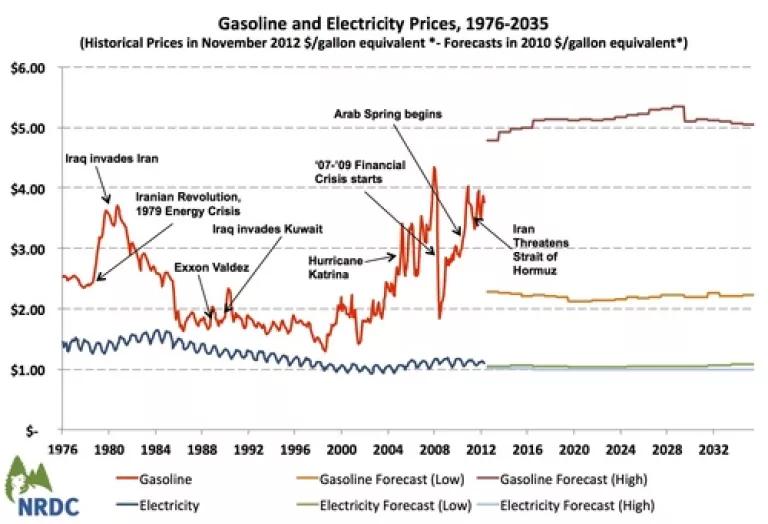If California is to reduce its pollution to a level climate science makes clear is necessary to avoid the worst impacts of global warming, it must address the transportation sector, which accounts for 40 percent of the state’s emissions. In light of this reality, the state has crafted a suite of innovative policies, one of which, the Low Carbon Fuel Standard, sets a goal of reducing the carbon intensity of California’s fuel supply ten percent by 2020. Oil companies have declared that seemingly modest reduction to be impossible, predicting economic apocalypse if we even try. However, an assessment released last week shows that electricity could play a central role in achieving the goals of the Low Carbon Fuel Standard. While the oil companies claim getting off oil would be too expensive, the fact is we can’t afford to stay addicted to a single, dirty fuel.
Analysis conducted by TIAX, commissioned by the California Electric Transportation Coalition, shows that, in the early years of the program, the goals of the Low Carbon Fuel Standard can be met almost entirely by electrifying a fraction of the state's light duty cars and trucks, passenger rail, forklifts, and refrigerator units on trucks. This analysis excludes a number of potentially significant electrification opportunities, including freight rail, airport ground support equipment, industrial tow tractors, docked cargo ships, port cargo handling equipment, and high speed rail. Nor does it address other cleaner fuels, such as advanced biofuels or renewable biodiesel. As my colleague, Simon Mui, explains, the oil companies’ claims there are no alternatives to fossil fuels are based on faulty and misleading assumptions.
Far from leading to economic apocalypse, switching to cleaner, cheaper electricity generally pays for itself. As shown in the chart below, for the last 40 years, driving on electricity has been the equivalent of driving on buck-a-gallon gasoline, and it’s forecasted to stay that way for the next three decades.

In fact, a recent study conducted by economists from UC Berkeley demonstrates that electrifying our cars and trucks would help grow the state’s economy, creating tens of thousands of new jobs. Simply put, a dollar not spent at the pump is re-directed towards the rest of the economy, creating 16 times more jobs than a dollar spent on gasoline. Saving money at the pump is good for consumers, good for economic growth, and good for California.
In fact, the Low Carbon Fuel Standard can make electricity an even more affordable transportation fuel. A peer-reviewed study conducted by experts from UC Davis, the University of Illinois, the University of Maine, Oak Ridge National Laboratory, the International Food Policy Research Institute, and Carnegie Mellon University estimates that the sale of Low Carbon Fuel Standard compliance credits could generate $157 per electric vehicle annually, or $4,700 over a vehicle’s lifetime. As explained previously, under rules adopted by the Air Resources Board, electric utilities must pass the revenue they generate from those compliance credits along to electric vehicle owners, further reducing the costs of driving on electricity.
Not a bad bonus for a decision to drive on a cleaner fuel. On today’s mix of generation resources, driving an electric car emits half as much pollution as the average conventional vehicle. In states where electricity is cleaner, like California, electric cars emit only a quarter the amount of the average gasoline vehicle. When charged with electricity from renewable resources, plug-in cars are virtually emission-free.
To sum it all up, we can reduce our dependence on fossil fuels by switching to cleaner alternatives, grow our economy, and save consumers money at the pump. The oil industry says that’s impossible. The whaling industry made similar claims about the indispensability of whale oil.



